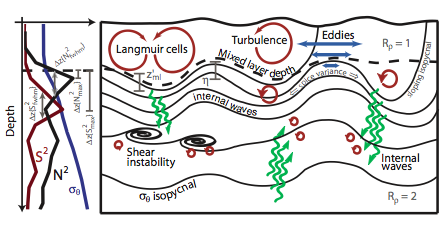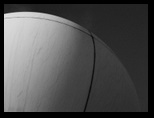THE TRANSITION LAYER
The transition layer is the interface between the stratified, weakly turbulent interior and the strongly turbulent surface mixed layer. Numerous mixed layer definitions succeed because of the large gradients in the transition layer. However, this transition layer is poorly understood and little studied, even though it is an ubiquitous feature. The transition layer is created by either intermittent mixing at the mixed layer base or heaving of interior isopycnals into the mixed layer. Buoyancy, momentum, and tracer fluxes applied at the ocean surface are transmitted through the mixed layer and transition layer into the stratified ocean interior. Maxima in stratification, current shear, and potential vorticity are found in the transition layer and will have considerable effect on the transmission of surface fluxes.

Several transition layer definitions are possible based on: 1) properties related to turbulence at the base of the mixed layer, i.e. shear, stratification, and potential vorticity; 2) vertical displacements of the mixed layer base and deeper isopycnals; and 3) other transitions from interior to mixed layer dynamics as measured by thermohaline variance, density ratio, and isopycnal slope. We used a global database of SeaSoar observations to create and test different definitions of the transition layer. While the diverse sets of transition layer thickness definitions based on turbulence, vertical displacements, and other dynamical considerations are often not well correlated with each other, their median values from 8-23 m below the mixed layer base are in remarkable agreement.
This research was a component of the Climate Process Team on Eddy - Mixed Layer Interactions, which was funded by NSF and NOAA.
